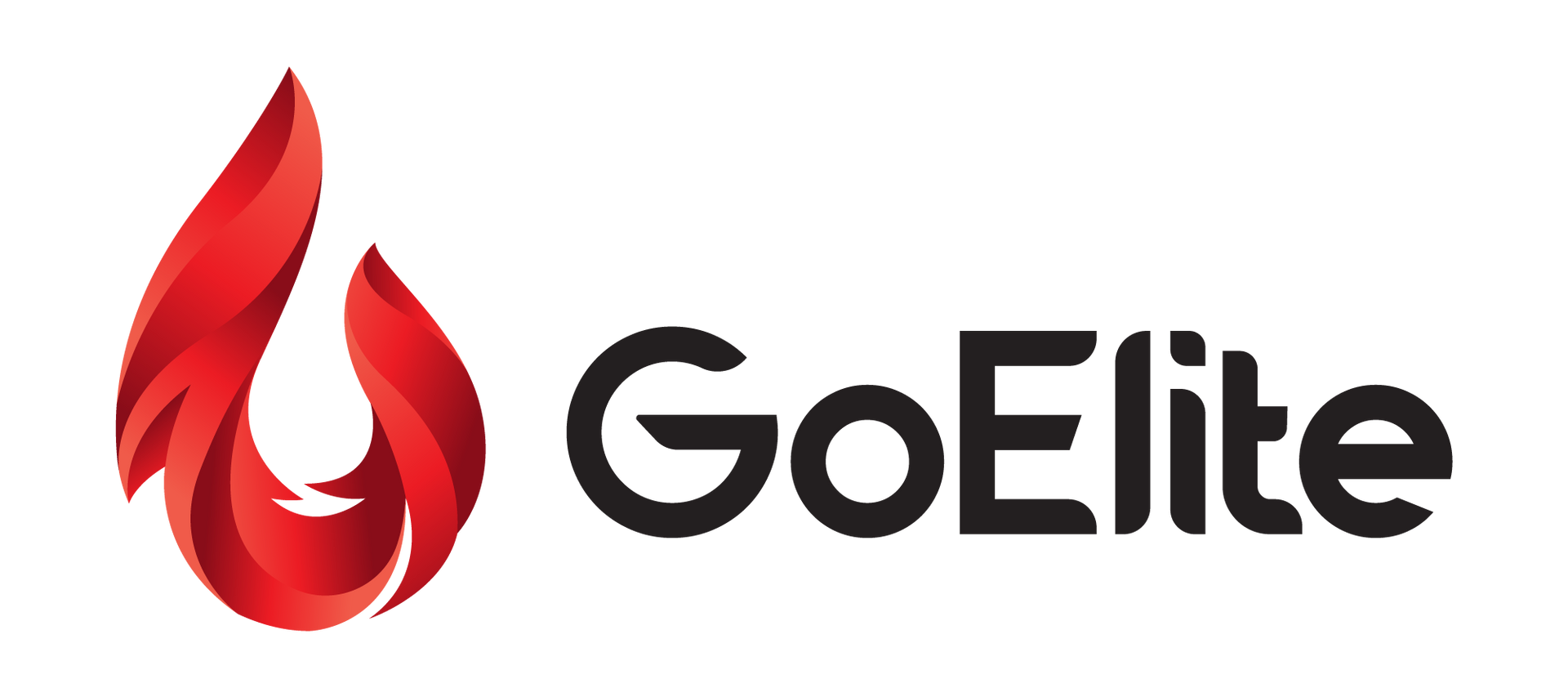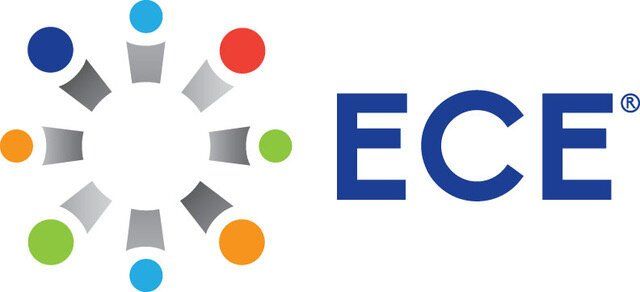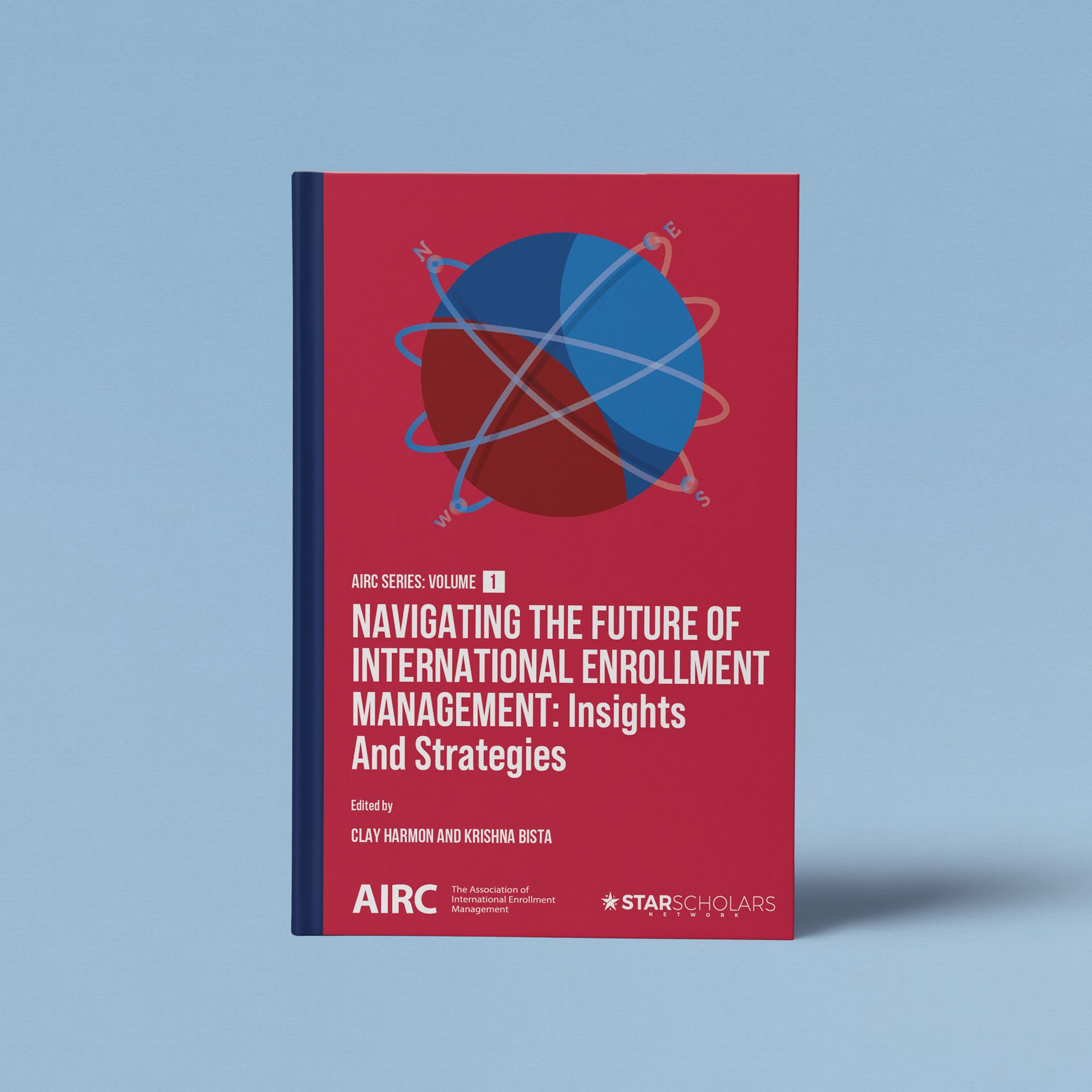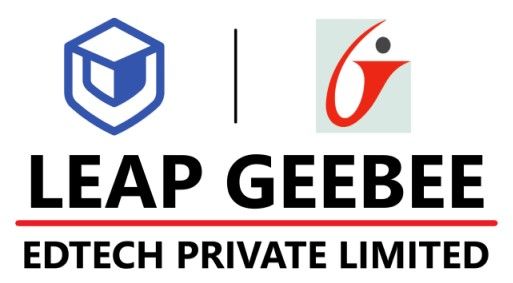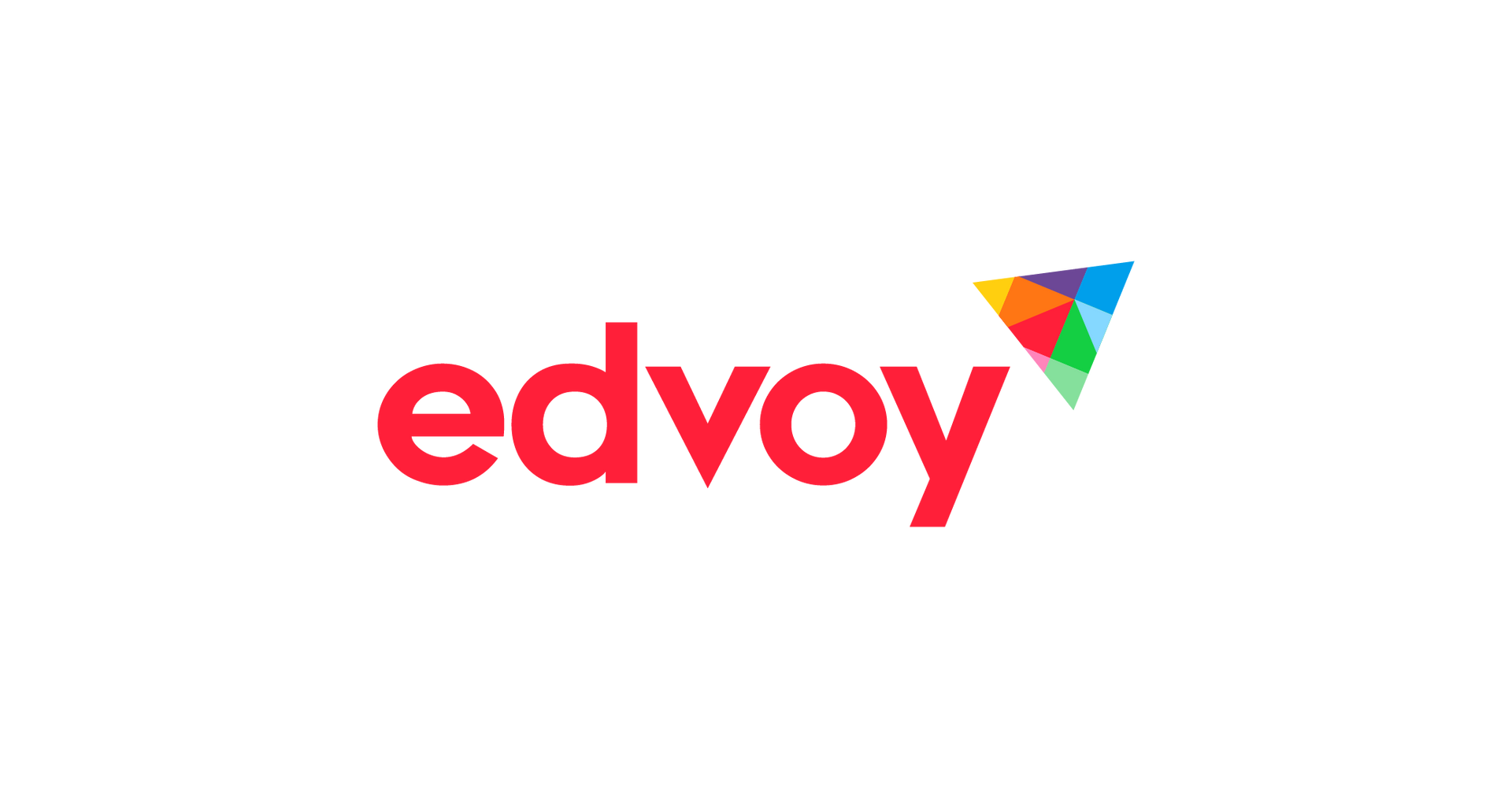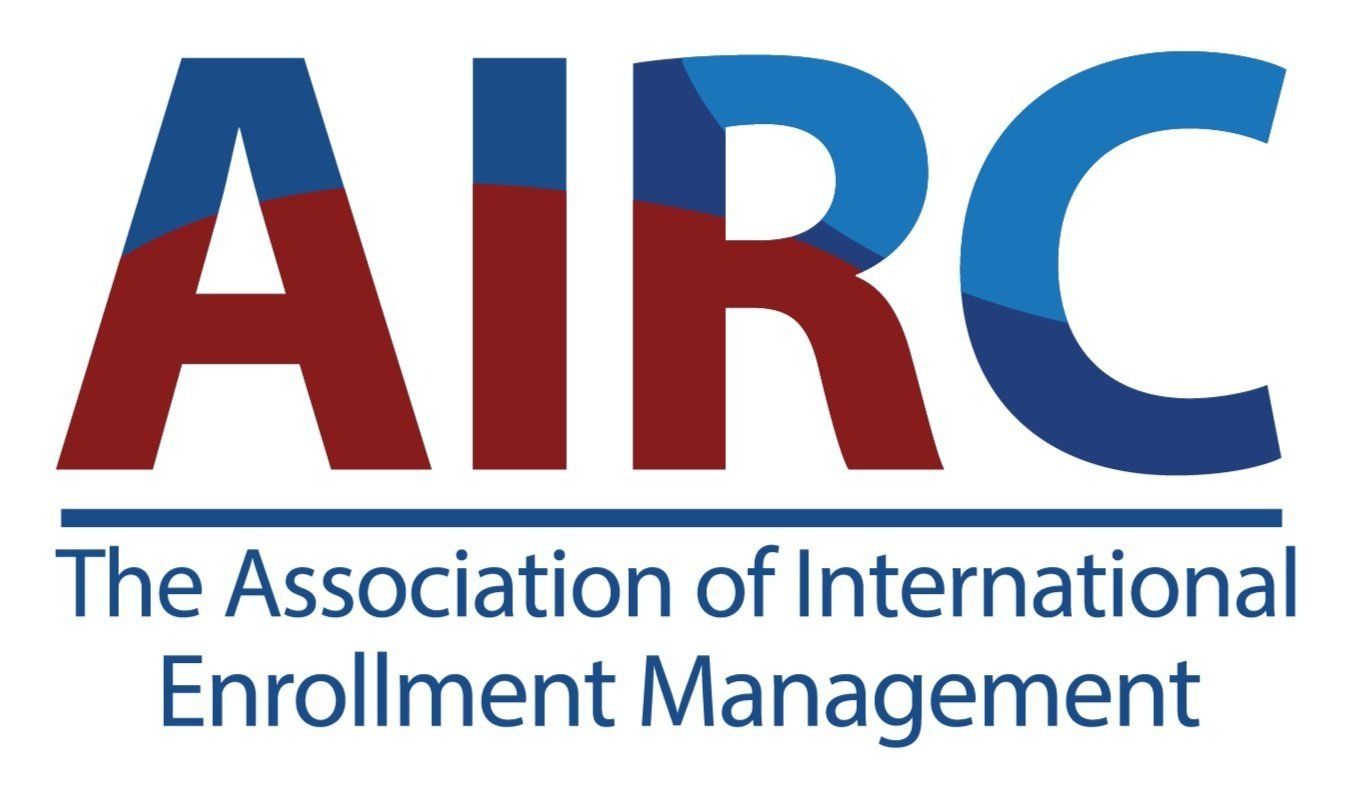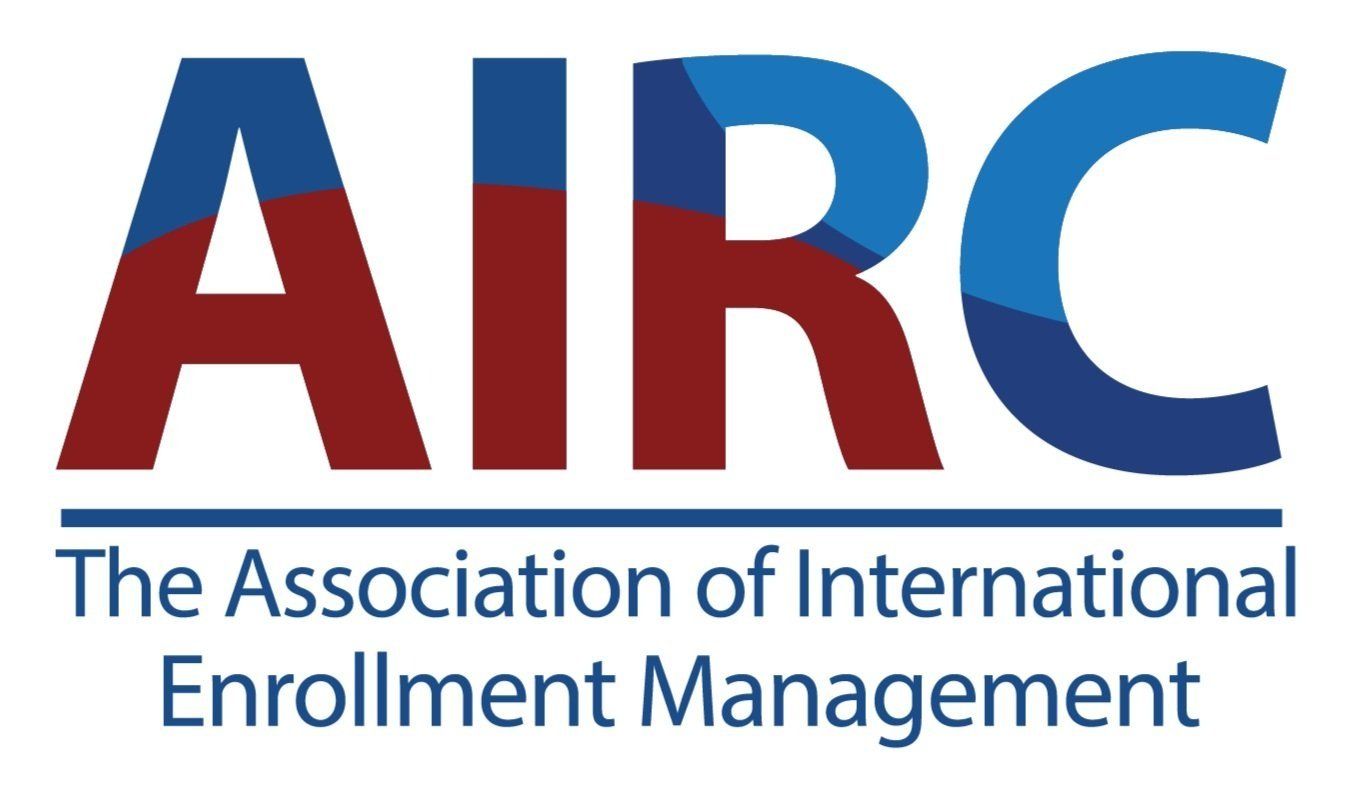Philippines in Focus: Recruitment Insights and Opportunities for U.S. Institutions
Introduction
The Philippines is emerging as a promising international recruitment market for U.S. higher education institutions. With a young, globally minded population and strong historical ties to the U.S., Filipino students are increasingly considering international study, especially in the U.S., as a pathway to personal and professional growth.
In a recent webinar hosted by IDP, in-country experts Jojo Habana, Philippines Country Director and Romina Romero, Country Destination Manager - Canada/US shared valuable insights into student motivations, enrollment trends, and recruitment strategies tailored to the Philippines market. IDP Philippines recently expanded U.S. operations, making it a perfect time for partners to diversify their recruitment strategies into this growing market. This article distills key insights and takeaways from the webinar.
Philippines Country and Education System Overview
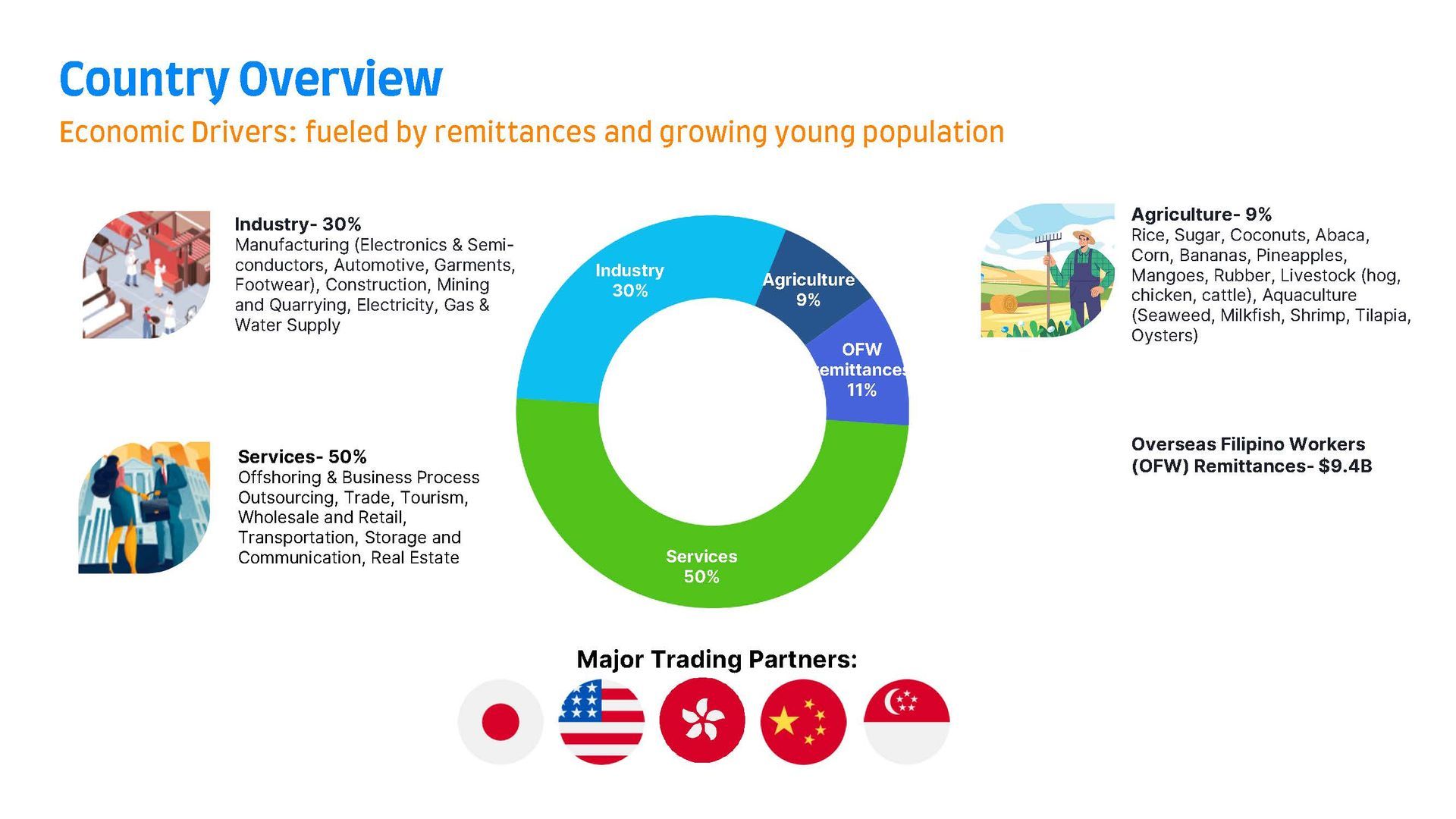
The Philippines is an archipelago of over 7,000 islands in the Western Pacific Ocean. With a population of over 116 million people, it ranks as the 13th most populous country in the world. The Philippines’s large, stable economy is one of the fastest growing in Southeast Asia, with a 5.5% growth rate in 2025.
The economy is driven primarily by services - accounting for 50% of total GDP – as well as industry and agriculture. Notably, a significant 11% of GDP comes from remittances of Overseas Filipino Workers (OFW). The global Filipino diaspora makes the idea of studying abroad a familiar concept for many families. “The prospect of traveling halfway around the world to work or study isn’t new to Filipinos,” explains Habana, “Many already have relatives or friends living abroad.”
The island nation has a large and growing youth population, with an average age of 25. This younger generation is globally minded and increasingly eager to study abroad. They embrace globalization, actively seek international experiences, and are motivated to learn, explore, and build careers overseas.
The Philippines has 4.8 million higher education students across public and private institutions in the country, and a literacy rate of 97%. As of 2024, there were an estimated 50 thousand Filipino students studying abroad in countries across the world. The nationwide academic calendar in the Philippines has had multiple changes over recent decades, affected by accessibility to schools during the rainy season. Depending on the school, the academic year starts between June and August and ends between March and May.
The most popular fields of study for Filipino students include:
- Business and Management
- Health and Medicine
- Engineering
- Information Technology
- Education
- Hospitality
While colleges and universities in the Philippines offer quality education, many students look for the opportunity to take more specialized programs from institutions overseas. Business and Management programs have historically been the most popular among Filipino students, but there is growing interest in Engineering and IT subjects, especially at the graduate level.
Voice of the International Student: Philippines
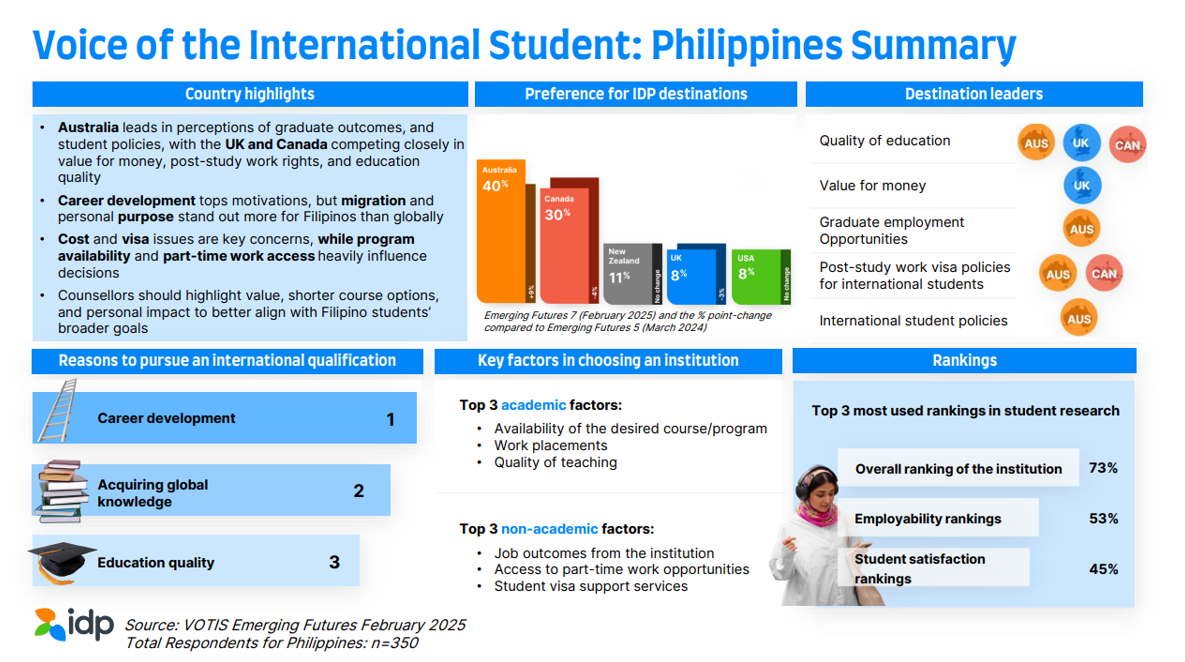
Emerging Futures is IDP’s signature, biannual survey which examines the attitudes, motivations and intentions of thousands of international students across the globe. The latest survey, Emerging Futures 7, included responses from hundreds of Filipino students, providing key insight into their motivations and preferences. This research revealed that career development, acquiring global knowledge, and education quality are the primary reasons Filipino students want to pursue an education abroad. Many students are migration-driven, and institutions should highlight value, program offerings, and personal impact to align with Filipino student’s broader goals. Cost and visa issues are key concerns, while program availability and part-time work access heavily influence decisions.
Philippines-U.S. Enrollment and Demand Trends
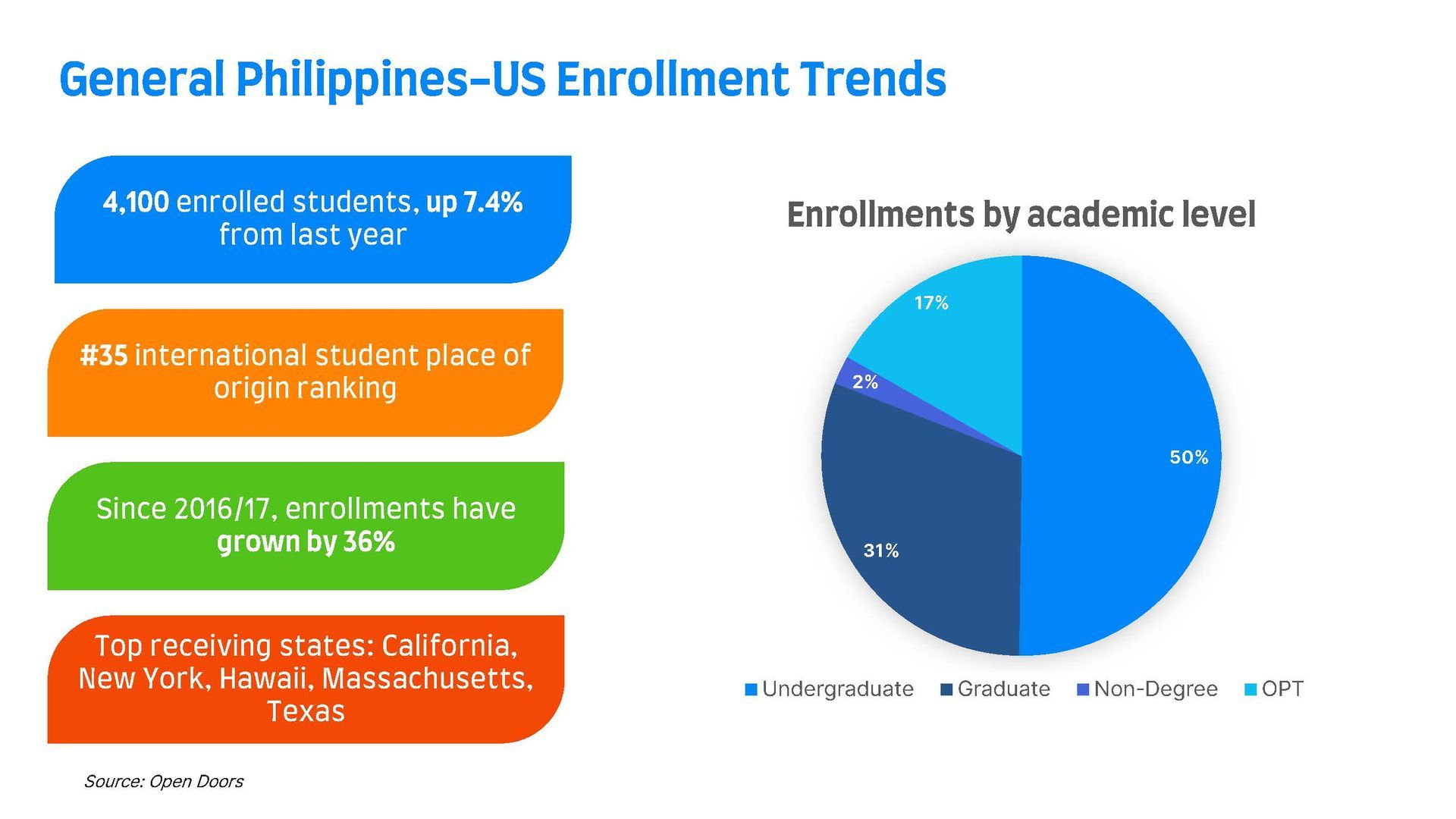
Over recent years, the U.S. has seen slow and steady growth in enrollments from the Philippines, around 3% annually.
Of the 4,100 Filipino students enrolled in U.S. higher education institutions in the 23/24 school year, only 1,800 came directly from the Philippines. The rest come from Filipino communities abroad, primarily in the Middle East, Taiwan, Hong Kong, and other parts of Southeast Asia. Institutions interested in recruiting Filipino students must be aware of these global diaspora communities.
Top U.S. destination states include California, New York, Hawaii, Massachusetts, and Texas, reflecting existing Filipino communities. Undergraduate and graduate program interest is mixed, with 50% of enrollments at the undergraduate level.
Student search demand trends
IDP’s IQ Demand tool provides real-time student demand data, powered by millions of annual searches on IDP and Hotcourses websites. This data reflects top-of-funnel demand for students who are early in their study abroad journey.
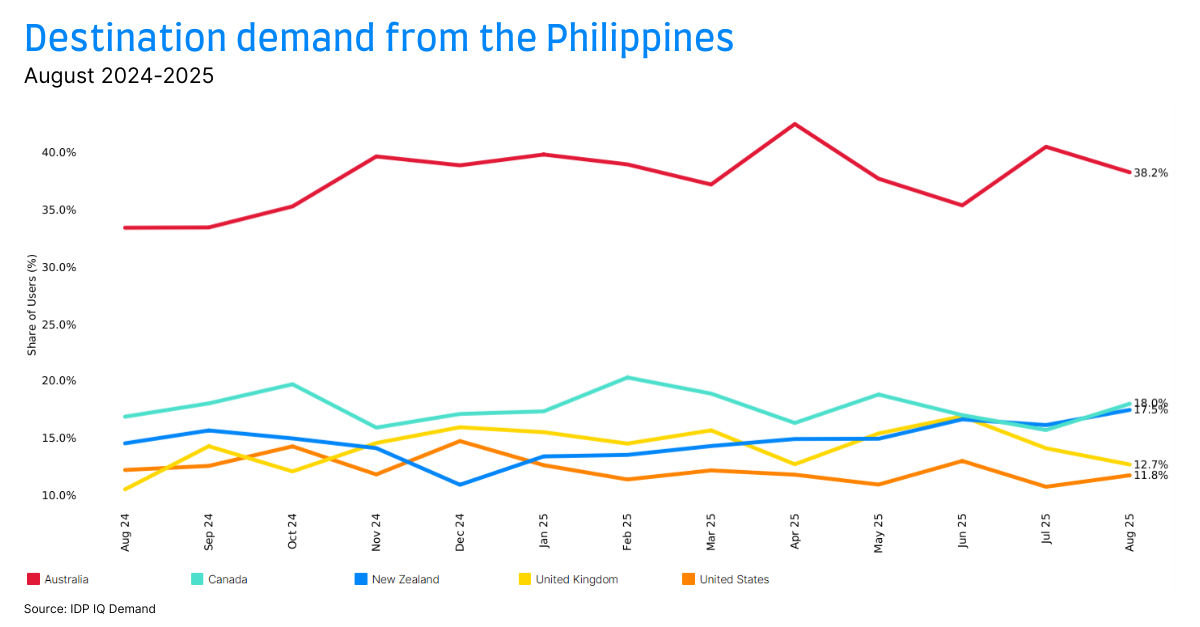
Looking at search demand from Filipino students for the top study destinations, Australia is the clear leader. This makes sense considering geographic proximity. The U.S. is in fifth place, retaining a stable ~12% share of demand from Aug 2024-2025. Additional destinations outside the “big four” that Filipino students are considering include New Zealand with 16% of demand, Singapore, Malaysia, Hong Kong, and China.
Funding Sources
Understanding the various funding sources in the Philippines is essential to effectively recruit students.
Undergraduate students are primarily funded by their parents, while “mature” students – those who have already been in the workforce for years - may be able to self-fund. Most of these mature students are interested in business programs, MBAs in particular, to expand their skills and advance in their careers.
Another key funding source for Filipino students is family and relatives abroad. Just as Overseas Filipino Workers send remittances home, it is also common to sponsor a family member to study abroad.
Finally, scholarships are an important funding source. EducationUSA has been expanding its presence in the Philippines and is actively working to promote U.S. higher education and scholarship opportunities such as Fulbright. The U.S. is considered an expensive destination, so Filipino students often look to combine funding sources to cover the full cost.
Student Responses to recent U.S. developments
Recent developments in U.S. policy, including visa delays and shifting regulations, have had a noticeable impact on Filipino students considering international education. Approximately 30% of IDP students who were initially planning to study in the U.S. have since changed their destination. This shift includes students who faced visa rejections, were unable to secure appointments, or simply reconsidered based on current perceptions of the market.
Despite these challenges, the U.S. remains a highly desirable destination, particularly among students aiming for Ivy League or other top-ranked institutions. However, Romero recognizes that not every student will gain admission to a high-ranking university, and points out the opportunity for alternative pathways, in particular 2+2 programs and community colleges.
Romero says that visa support and clear communication about available pathways are critical to helping Filipino students make informed decisions and feel confident in their choice to study in the U.S. “Information sessions where you can really share the unique value of your institution are very helpful, and we really need support from institutions through the visa process,” she explains.
Partnering with IDP Philippines
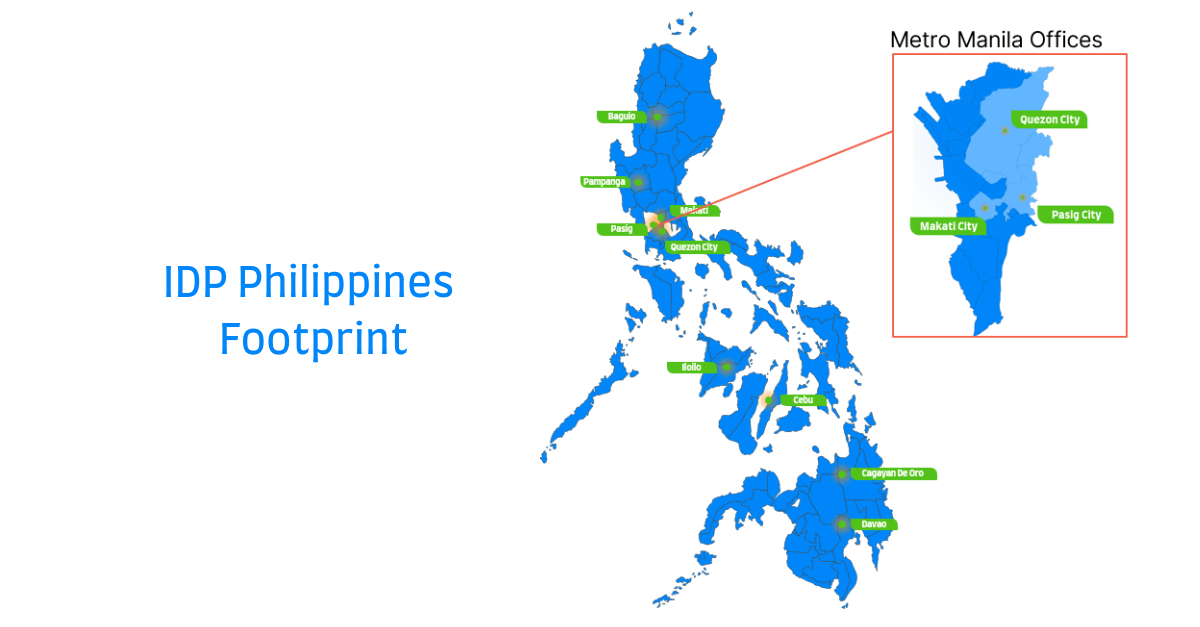
IDP has a strong and growing presence in the Philippines, making this an ideal time for U.S. institutions to expand their recruitment strategies in the country. With 10 offices and 24 counselors spread across the main islands, IDP offers support to students from north to south. IDP’s largest presence is in Metro Manila (home to three locations) and Cebu, which together account for 40–50% of the total student volume served. Given the heavy traffic in Metro Manila, proximity to students is key for accessibility and engagement.
With the recent expansion of IDP Philippines’ U.S.-focused operations, three strategic pillars are driving growth in U.S. enrollments:
- Conversion Improvement - Dedicated U.S. counselors are enhancing student support, streamlining processes, and delivering a high-quality experience.
- Social Media Engagement - Creating positive visibility for the U.S. as a study destination helps reinforce its appeal and counteract recent uncertainties.
- Increasing U.S. Partner Exposure - Maintaining a consistent presence in the market is essential for long-term growth and brand recognition.
Collaboration with U.S. partners is central to these efforts. Institutions are encouraged to engage with IDP through visits, events, and digital initiatives. Social media offers both free and paid opportunities to connect with students:
Free Social Media Opportunities
- Get to Know IDP Partners: Submit a short video introducing your institution, which will be shared on IDP’s social channels.
- U.S. FAQs: Help counselors address common misconceptions about studying in the U.S.
- Student Testimonials: Connect us with Filipino student ambassadors who can take over IDP’s social media for a day.
Paid Social Media Opportunities
- Campus Conversations: Long-form studio content featuring your institution.
- Unboxing Sponsorships: Support a student’s pre-departure experience while they share why they chose your institution.
- Facebook Live: Gain 10 minutes of airtime during major events to reach online audiences.
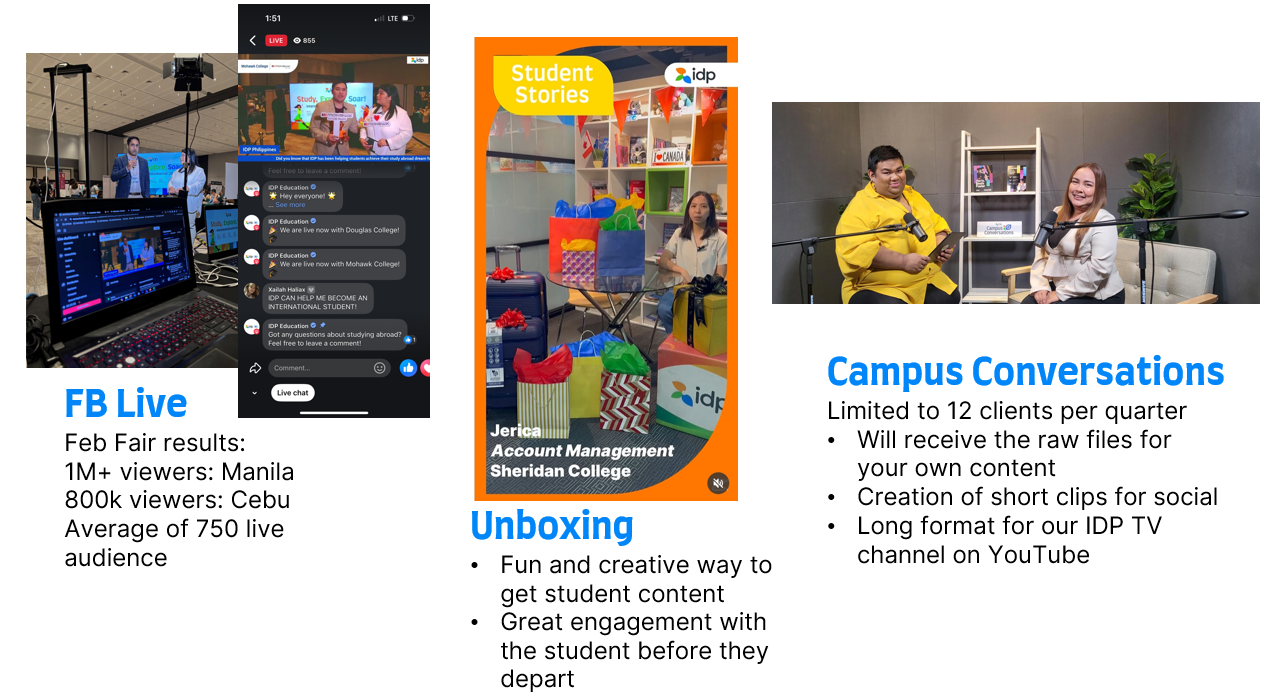
Events and Fairs
IDP Philippines hosts both virtual and in-person events, offering flexible options for institutions with varying budgets. Two major in-person fairs are held annually in Manila and Cebu each September and February, and smaller events take place in cities across the country throughout the year. These events attract a diverse mix of students across study levels, and participation slots are limited to ensure broad exposure for all institutions.
For those able to travel to the Philippines, Romero strongly recommends adding on visits to international high schools, such as International Baccalaureate (IB) schools, where a significant number of students pursue study abroad. The IDP Philippines team is ready to support your institution in planning a strategic and effective recruitment trip, tailored to your unique goals and priorities in the market.
Final Thoughts
The Philippines offers a vibrant, growing market for U.S. institutions. With a young population, strong English proficiency, and deep cultural ties to the U.S., Filipino students are well-positioned for success in American higher education. By partnering with IDP and tailoring your outreach, you can tap into this dynamic market and support students on their journey abroad.
Ready to discuss how IDP can support your recruitment efforts in the Philippines?
Get in touch with our team today.
About IDP Education
IDP is a trusted leader in international education services that helps people study abroad and achieve their goals. As a key voice in the industry, IDP partners with educational institutions worldwide to connect them with the right students. IDP has maintained AIRC certification for over a decade.
IDP also proudly co-owns IELTS, the world’s leading English language proficiency test.
Established in Australia in 1969, IDP now operates in over 60 countries. While we’ve grown and evolved, our purpose remains the same: to empower people transform their lives through international education. Learn more at partners.idp.com.


